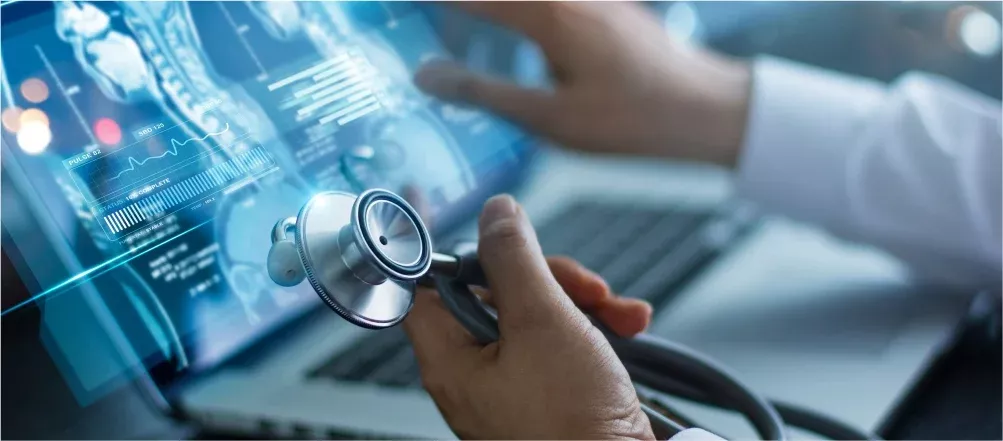Introduction
At the cusp of innovation, healthcare is using new technologies to improve patient care, thus ushering in a new era of digital transformation. With the advent of 5G and better connectivity, healthcare system is envisioning a transformative step forward that vastly improves the lives of both health professionals and patients. With 5G, telemedicine and the industry at large can benefit from superior, security-rich connectivity built to address current challenges and unlock new possibilities.
Emerging technologies pivotal to healthcare transformation:
- 5G New Radio interface and access: These must extend beyond those of previous generations of mobile communication, with massive system capacity, extremely low latency, ultra-high reliability and availability, and very low device energy consumption.
- Federated Network Slicing: This enables roaming of network slices in other networks to provide global reach for services.
- RAN virtualization and Distributed Cloud: This ensure very low end-to-end latency.
Key 5G Dimensions in Remote Robotic Surgery
- Latency
- Peak Data Rate
- User Experienced Data Rate
- Availability
- Reliability
- Security
How 5G's Capabilities will impact Healthcare
- Latency
- Bandwith
- Capacity
- Reliability
- Mobility
- Battery Life
Benefits
Quick Transmission of Large Imaging Files
With the help of a high-speed 5G network, the existing architectures can help quickly and reliably transport huge data files of medical imagery, including MRIs and other massive image machines.
Expansion of Telemedicine
According to a study by Market Research Future, the telemedicine market is expected to grow at a compound annual growth rate of 16.5% between 2017 and 2023 due to increased demand in rural areas for healthcare.
Improvising AR, VR and Spatial Computing
5G can further enhance a doctor's ability to deliver innovative, less invasive treatments through Augmented Reality (AR), Virtual Reality (VR) and Spatial Computing.
Reliable, Real-Time Remote Monitoring
Through the usage of IoT devices, healthcare providers can monitor patients and gather data that can be used to improve personalized and preventive care.
Implementation of Artificial Intelligence
Usage of Artificial Intelligence (AI) in healthcare determines potential diagnoses and helps deciding on the best treatment plan for a specific patient.
Implementing Digital Transformation in Healthcare
High cost and complexity of new technologies
Challenge: Building custom solutions, customised to the individual needs of a particular healthcare company is often an expensive endeavor.
Solution: Look for softwares that are available on a SaaS basis, which means that vendors will charge monthly fees that can be easily included in your operational expenses.
Slow paced tech adoption in the healthcare industry
Challenge: Reports suggest that clinicians do not have enough time to participate in implementing new software, evaluating it, or learning how to use it.
Solution: Through a realistic evaluation of project timeline, end-users, and stakeholders, organizations can allocate resources for implementing digital healthcare solutions.
Outdated legacy platforms
Challenge: Since new software cannot run on legacy infrastructures and won’t integrate with outdated systems, organizations will have to undergo full or partial IT systems upgrade, which will involve expenses.
Solution: Identify the core areas that need automation, and assess the readiness of organizations IT systems to support the new software.
Existence of manual data entry or outdated data analysis systems
Challenge: Most of the data are stored in disparate databases and in incompatible formats, filled with errors or simply cannot be retrieved. The healthcare providers cannot take full advantage of the healthcare software capabilities due to low quality of data.
Solution: Retrieve your data from legacy databases and aggregating it into a consistent data poo. This helps those healthcare systems who want to implement data analytics solutions.
Data protection and cybersecurity
Challenge: As technologies get more sophisticated, cyber crimes too are on a rise. New software demands new methods of security protection for organizations that are legacy-bound security.
Solution: Start by bridging the knowledge gap and learn about modern AI-based systems for healthcare security protection.
HIPAA compliance and overall public healthcare policy and regulations
Challenge: The HIPAA law requires healthcare companies to take strong measures in order to protect Personal Health Information. Compliance with HIPAA regulations means that companies are refrained from using tools like Dropbox and Google Sheets that other businesses can access on a freemium basis.
Solution: Chose a software vendor who is HIPAA compliant.

